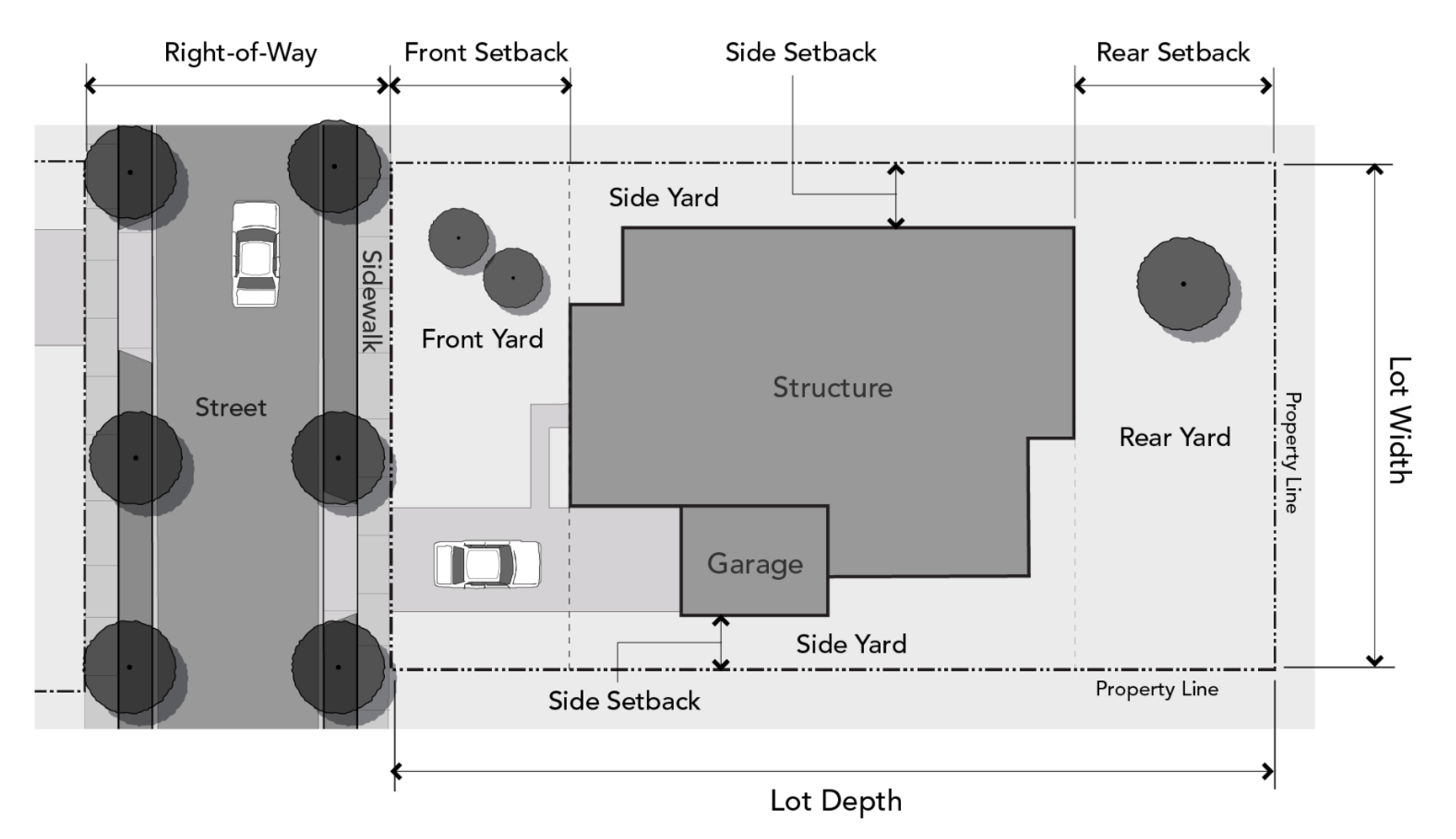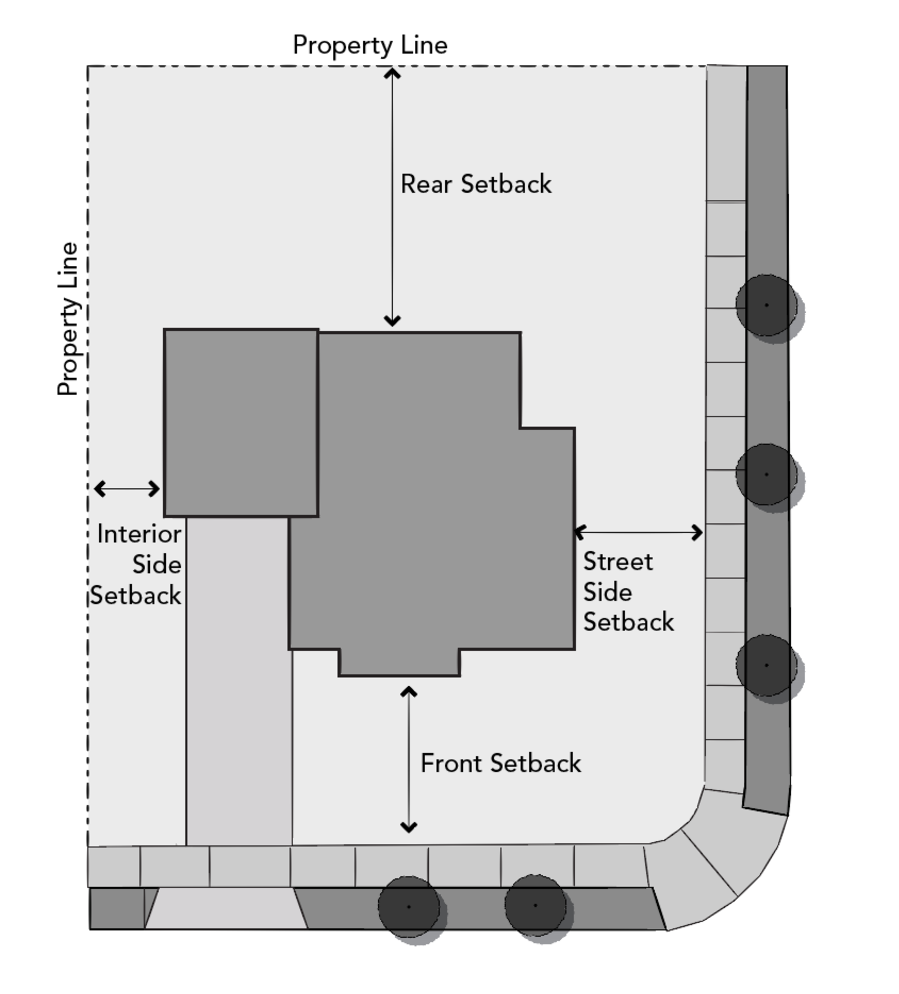17.158.042 S definitions.
Screening. A wall, fence, hedge, informal planting, or berm, provided for the purpose of buffering a building or activity from neighboring areas or from the street.
Self-Sufficiency Program. A program designed to assist individuals and families in meeting their basic needs and address any substance dependency and mental health issues so that they do not need to rely on emergency public or private assistance.
Setback. The distance from which a structure, parking area, or other development feature must be separated from a prescribed lot line, easement, or other feature (see Figure 9-4: Setbacks), and as specified in the development regulations of each zone. See also Section 17.70.170 (Setbacks).
Figure 9-4. Setbacks

Setback, Front. The minimum distance required between a structure and the front property line.
Setback Line. An officially adopted line determining the extent of a future street or other public right-of-way.
Setback, Rear. The minimum distance required between a structure and the rear property line.
Setback, Side. The minimum distance required between a structure and a side property line. Also referred to as “interior side setback.”
Setback, Street Side. On a corner lot, the minimum distance required between a structure and the property line along the side lot line that is adjacent to a street. See Figure 9-5: Street Side Setback.
Figure 9-5. Street Side Setback

Shopping Center. A development consisting of at least five separate establishments with a minimum area of fifty thousand square feet, a site with a minimum of three hundred feet of frontage and shared common drives and off-street parking.
Sidewalk. A paved, surfaced, or leveled area, paralleling and usually separated from the street, used as a pedestrian walkway.
Site. A lot, or group of contiguous lots, that is proposed for development in accordance with the provisions of this title and is in a single ownership or under unified control.
Slope. An inclined ground surface the inclination of which is expressed as a ratio of horizontal distance to vertical distance (e.g., 2:1 or 1:1) or as a percentage (e.g., fifty percent or one hundred percent).
Slope, Average. For the purpose of the hillside development standards, the term “average slope” shall be defined as the relationship between the change in elevation (rise) of the land and the horizontal distance (run) over which that change in elevation occurs.
Specific Plan. A plan for a designated area within the city, based on the general plan, but containing more detailed regulations and programs as provided in Government Code Section 65450 et seq.
State. The state of California.
Storage—Accessory. The storage of materials accessory and incidental to a primary use and is not considered a land use separate from the primary use.
Story. The portion of a building included between the upper surface of any floor and the upper surface of the next floor above, except that the topmost story shall be that portion of a building included between the upper surface of the topmost floor and the ceiling above.
Street. A public or private right-of-way providing vehicular access to abutting property.
Structure. Anything assembled or constructed on the ground, or attached to anything with a foundation on the ground.
Structure, Accessory. A structure that is located upon the same site as the structure or use to which it is accessory. Accessory structures may consist of detached structures or additions to primary structures. The use of an accessory structure is incidental and subordinate to the use of the principal structure, or to the primary land use of the site. Does not include habitable accessory structures such as accessory dwelling units (ADUs). See also “Building, Accessory.”
Structure, Principal (Structure, Main; Structure, Primary). A structure housing the primary use of a site or functioning as the primary use.
Structure, Temporary. A structure without any foundation or footings and which is intended to be removed when the designated time period, activity, or use for which the temporary structure was erected has ceased.
Studio. A dwelling unit characterized by an open floor plan, with no interior walls separating spaces into separate rooms. (Ord. 1650 § 3 (Exh. B), 2018)